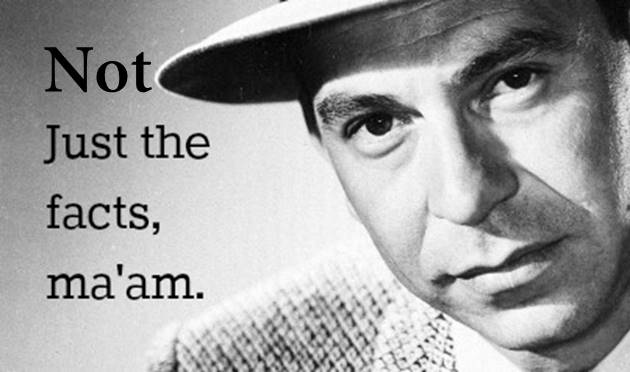“I just want to get the facts, ma’am,” Joe Friday (actor Jack Webb) famously implored when questioning women in the old TV police show, Dragnet.
Joe Friday might have just wanted the facts, but your audience wants more.
Sure, they want to know your material, but they also want to know you. They want to connect with you as a human being and they want to connect with your material because it matters to them on an emotional level. Even the hard-nosed business types and the highly educated professionals.
Emotions connect us and drive us in a way that dry logic can’t. Logic will get hijacked by emotions almost every time. If you can connect with your audience on an emotional level, they can be more easily moved to agree with your supporting logic.
I once had a presentation client, I’ll call “Susan” who was preparing to present a 3 hour seminar on a topic in psychology. Well, the first thing Susan and I talked about was the need for at least one break for the audience. No matter how fascinating your topic nor how engaging you are as a speaker, people need a “bio” break! That concept was an easy sell.
The second issue was the huge amount of content she wanted to cover, using a PowerPoint presentation that truly was “Death by PowerPoint,” with slide after slide of bullet points, long paragraphs, and charts that were impossibly complicated. Getting her to put less on her slides was a bit more difficult than getting her to allow for a “bio” break, but she relented when reflecting on her own experiences having to sit through such visual torture.
What was more difficult was getting Susan to try to engage the participants emotionally, through stories, especially personal stories.
Why?
Susan, like many other presenters felt that stories were “fluff.”
“I have a lot of material to cover and telling stories just doesn’t seem professional. Stories are fluff.”
After a little more digging, she also admitted that telling personal stories was uncomfortable.
“I would feel too vulnerable showing emotion in a story. And I might make other people uncomfortable.”
BINGO. She was afraid of being judged for having emotion or recreating an experience that would invoke emotions in others. Her professional veneer might get tarnished by emotion in the telling of a personal story.
But she was willing to try.
I asked her to tell me WHY her topic was important, what difference did it make in the world. I asked her how she first realized the importance. And . . . she told me a story, a story about an experience with a client that forever changed her practice. As she told the story, she was animated and engaging. I could put myself in her place and feel her emotions.
“That’s your story! That’s the story you start with,” I told her.
We worked on the story, and the rest of her presentation, to add some additional touch points (and some audience activities . . . 3 hours is a long time to keep people’s attention without switching it up).
I called her a few days after her presentation to ask how it went, and she seemed almost amazed at how well it went.
“When I opened with that story, I had them all spellbound. It was an incredible experience to connect with them. Some even had tears in their eyes. I made my topic important and relevant to them with that story. It wasn’t fluff.”
Don’t be afraid to connect with your audience by being authentically vulnerable. Tell personal stories that evoke emotion. And tell those stories with passion!
Not afraid, but passionate.

